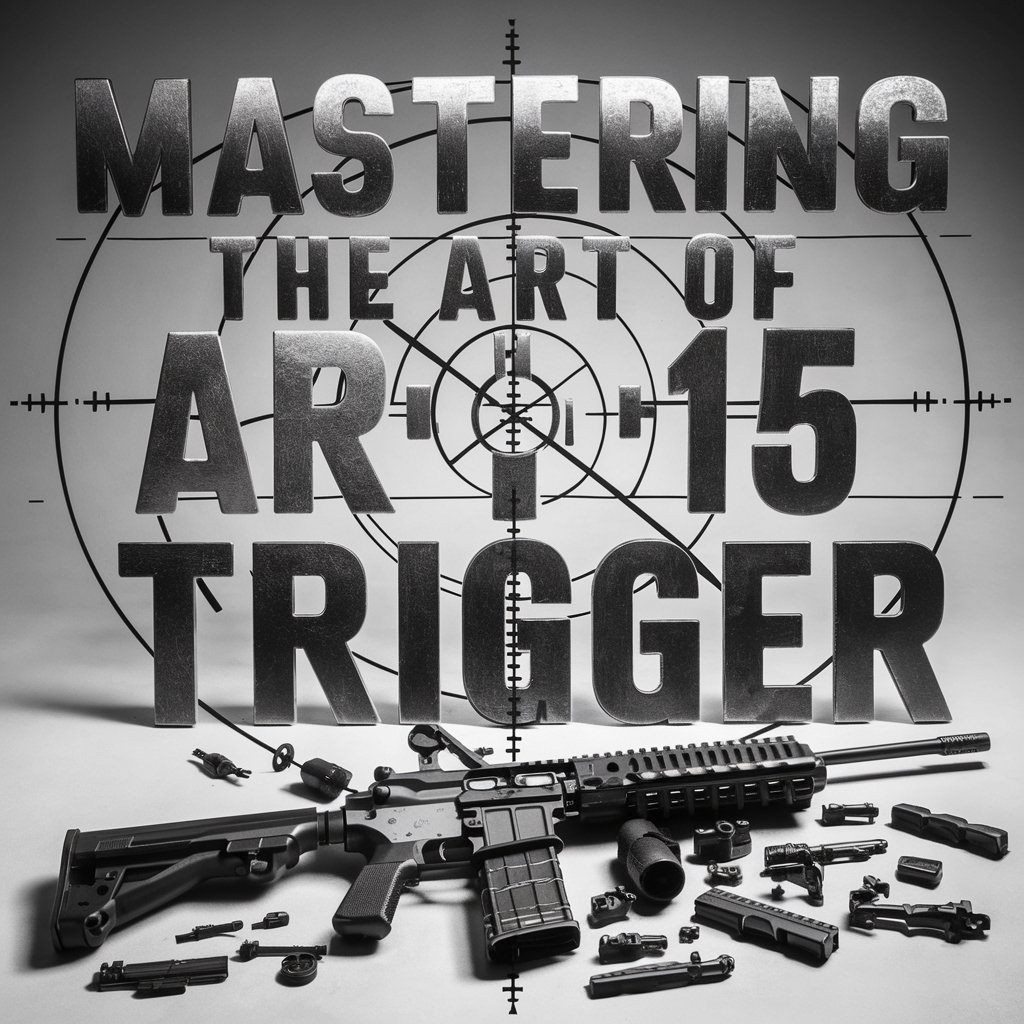Key Takeaways:
- The AR-15 trigger greatly influences the rifle’s performance
- A high-quality trigger improves accuracy, precision, and control
- Different types of triggers include mil-spec, single-stage, two-stage, and match-grade
- Aftermarket triggers offer customization options for pull weight and design
- Adjusting pre-travel and over-travel enhances trigger control
- Understanding and maintaining the safety mechanism is crucial
- Regular maintenance and cleaning are essential for safe and reliable performance
The Basics: Understanding the AR-15 Trigger
The AR15 Parts trigger is a critical component that greatly influences the performance of this popular rifle. It plays a crucial role in determining the rifle’s accuracy, reliability, and overall shooting experience. Understanding how the AR-15 trigger works and the different types available is essential for any shooter looking to enhance their shooting skills and optimize their rifle.
1.1 The Importance of the Trigger in AR-15 Performance
The trigger is often described as the “heart” of a firearm, and the AR-15 is no exception. A high-quality trigger can make a significant difference in accuracy, precision, and overall shooting performance. A smooth, predictable trigger pull allows shooters to maintain better control over their shots, resulting in tighter groupings and increased accuracy.
Furthermore, the trigger’s weight, measured in pounds, directly affects the force required to break the trigger and discharge the rifle. A lighter trigger pull weight can improve shooting speed and reduce the chances of pull-induced movement, making it particularly advantageous for competitive shooting or tactical applications.
1.2 How the AR-15 Trigger Works: A Technical Breakdown
The AR-15 trigger operates on a simple mechanical principle. When the trigger is pulled, it releases a small hammer that strikes the firing pin, igniting the primer of the cartridge and ultimately firing the round. The precise timing and smooth operation of this process are crucial for accuracy and reliability.
Within the trigger assembly, there are several components that work together to facilitate this sequence of events. These include the trigger itself, the disconnector, hammer, sear, and springs. Each component has a specific function, and any flaws or inconsistencies in their design or manufacturing can significantly impact trigger performance.
1.3 Different Types of AR-15 Triggers: Finding the Right One for You
There are various types of triggers available for the AR-15, each with its unique characteristics and advantages. It’s essential to understand these differences to choose the right trigger for your shooting style and preferences.
1.3.1 Mil-Spec Trigger: The mil-spec trigger is the standard trigger found in most AR-15 rifles. While it’s known for its reliability and durability, it can be heavy, gritty, and have a long pull. This trigger is suitable for general-purpose shooting but may not provide the precision and responsiveness desired by more experienced shooters.
1.3.2 Single-Stage Trigger: Single-stage triggers have a single pull weight and break cleanly without any additional stages or slack. They are popular among competition shooters and tactical users who prioritize fast and predictable trigger pulls. Single-stage triggers are known for their simplicity and ease of use.
1.3.3 Two-Stage Trigger: Two-stage triggers have a distinct “staging” or “take-up” phase followed by a final “break” or “let-off” phase. They offer a more gradual and predictable trigger pull, allowing shooters to maintain better control and improve accuracy. Two-stage triggers are often favored by precision shooters who value the ability to stage their trigger pull for precise shot placement.
1.3.4 Match-grade Trigger: Match-grade triggers are precision-engineered triggers designed to offer superior performance and consistent trigger pulls. They are often hand-fitted and meticulously inspected for tight tolerances and minimal creep or overtravel. Match-grade triggers are commonly used in competitive shooting and precision rifle applications.
Improving Performance: Upgrades and Modifications
While the factory-installed triggers on AR-15 rifles are generally functional, many shooters choose to upgrade their triggers to enhance performance and optimize their shooting experience. Aftermarket triggers offer a wide range of options, allowing shooters to tailor their trigger to meet their specific needs and preferences.
2.1 Aftermarket Triggers: Exploring the Options
Aftermarket triggers come in various designs, each offering unique features and advantages. Some popular aftermarket trigger manufacturers include Geissele Automatics, Timney Triggers, and CMC Triggers, among others. These manufacturers offer a selection of triggers varying in pull weight, trigger type, and additional enhancements.
2.1.1 Drop-In Triggers: Drop-in triggers are pre-assembled units that can be easily installed in place of the factory trigger. They are popular among novice shooters or those who prefer a hassle-free installation process. Drop-in triggers are available in both single-stage and two-stage designs.
2.1.2 Modular Triggers: Modular triggers allow shooters to customize various aspects of the trigger, such as pull weight, trigger shoe design, and reset characteristics. They offer a higher level of adjustability and personalization.
2.1.3 Adjustable Triggers: Adjustable triggers provide the ability to fine-tune the trigger pull weight, overtravel, and pre-travel to suit individual preferences. These triggers are often favored by experienced shooters who desire maximum control and customization.
2.2 Choosing the Best Trigger Pull Weight for Your Needs
The trigger pull weight refers to the force required to break the trigger and discharge the firearm. It is an essential consideration when selecting or modifying an AR-15 trigger. The optimal trigger pull weight depends on the shooter’s intended application and personal preferences.
2.2.1 Light Trigger Pull: A light trigger pull, typically ranging from 2 to 3.5 pounds, offers the advantage of faster, more precise shooting. However, it requires a higher level of discipline and training to prevent accidental discharges. Light triggers are commonly used in competitive shooting and precision rifle applications.
2.2.2 Medium Trigger Pull: A medium trigger pull, ranging from 4 to 6 pounds, strikes a balance between sensitivity and safety. This pull weight is often suitable for general-purpose shooting, including home defense and recreational shooting.
2.2.3 Heavy Trigger Pull: A heavy trigger pull, typically exceeding 6 pounds, provides an added measure of safety and is commonly used in military and law enforcement applications. However, heavy trigger pulls can impact accuracy and shooting speed.
2.3 Enhancing Trigger Responsiveness: Tips and Tricks
Aside from upgrading to an aftermarket trigger, there are several techniques and modifications that can be employed to improve the responsiveness of your AR-15 trigger:
– Polishing and smoothing the contact surfaces of the trigger components to reduce friction and improve the trigger pull.
– Replacing the factory trigger springs with lighter, high-quality springs to reduce pull weight and improve trigger reset speed.
– Installing an enhanced trigger control group that incorporates specialized parts designed to enhance trigger performance and reset.
Tuning for Precision: Achieving the Perfect Break
Understanding and mastering trigger reset, as well as adjusting pre-travel and over-travel, are essential for shooters seeking optimum precision with their AR-15 rifles.
3.1 Understanding Trigger Reset: Mastering the Follow-through
The trigger reset is the movement of the trigger that occurs after the weapon has been fired and the shooter releases pressure. It allows the shooter to maintain contact with the trigger and prepare for subsequent shots quickly. A short and tactile reset is crucial for rapid and accurate follow-up shots.
3.1.1 Reset Characteristics: Different triggers can have varying reset characteristics, including audible clicks or tactile feedback. Shooters should choose a trigger with a reset that suits their shooting style and preferences.
3.1.2 Training for Reset: Regular dry-fire practice can help shooters become familiar with their trigger’s reset point and build muscle memory to take full advantage of the reset during live fire.
3.2 Adjusting Pre-Travel and Over-Travel: Fine-tuning Your Trigger
Pre-travel refers to the distance the trigger must travel before engaging the sear, while over-travel refers to the distance the trigger moves after the sear releases. Adjusting these parameters can improve trigger control and reduce the chances of undesired trigger movement during the shot.
3.2.1 Pre-Travel Adjustment: Many aftermarket triggers offer the ability to adjust pre-travel. Reducing pre-travel can minimize the distance the trigger must travel before the shot breaks, resulting in a crisper trigger pull and improved accuracy.
3.2.2 Over-Travel Adjustment: Over-travel can be reduced by adjusting the set screw or using adjustable trigger shoes that limit the rearward movement of the trigger after the shot breaks. Reducing over-travel can enhance trigger control and increase shooting speed.
3.3 The Benefits of Single-Stage and Two-Stage Triggers: Making an Informed Choice
Single-stage and two-stage triggers offer different advantages, and shooters must consider their shooting style and preferences when choosing between the two.
3.3.1 Single-Stage Triggers: Single-stage triggers offer a simpler operation and a consistent trigger pull from start to finish. They excel in applications requiring rapid, precise shooting, such as competitive shooting or dynamic shooting scenarios.
3.3.2 Two-Stage Triggers: Two-stage triggers provide a staging phase that allows shooters to build tension gradually before the final break. This feature is advantageous for precision shooting, as it enhances trigger control and shot placement.
Fine-tuning Safety: Ensuring Secure Operation
While optimizing trigger performance is important for accuracy and shooting experience, ensuring the safety of the AR-15 is paramount. Proper understanding and maintenance of the safety mechanism are crucial.
4.1 The Importance of a Proper Safety Mechanism
The safety mechanism of the AR-15 is designed to prevent accidental discharges and ensure safe handling. It consists of a safety selector lever that can be set to “safe,” “semi-automatic,” or sometimes “full-automatic.” Understanding the proper operation and function of the safety selector is essential for safe firearm handling.
4.2 Troubleshooting Common Safety Issues with AR-15 Triggers
Occasionally, shooters may encounter safety-related issues with their AR-15 triggers. These can include unreliable or inconsistent safety engagement or disengagement. If faced with such issues, it is highly recommended to consult with a qualified gunsmith or manufacturer to ensure the problem is resolved safely and effectively.
4.3 Proper Maintenance and Cleaning for Safe and Reliable Performance
Regular maintenance and cleaning are crucial for maintaining the safe and reliable operation of your AR-15 trigger.
4.3.1 Cleaning: Regularly clean the trigger components to remove debris, fouling, and carbon buildup. Follow the manufacturer’s guidelines for disassembly, cleaning solvents, and lubrication.
4.3.2 Inspection: Periodically inspect the trigger components for wear, damage, or any signs of malfunction. Replace any worn or damaged parts promptly to ensure the continued safe operation of your rifle.
4.3.3 Lubrication: Apply a light film of high-quality firearm lubricant to the trigger components to reduce friction and ensure smooth operation. Avoid over-lubrication, as excessive lubricant can attract dirt and debris.
In conclusion, understanding the AR-15 trigger and how to optimize its performance is essential for shooters looking to maximize their shooting skills. By exploring the various types of triggers, considering upgrades and modifications, and fine-tuning for precision and safety, shooters can master the art of the AR-15 trigger and achieve greater accuracy and shooting satisfaction.
FAQ
Question: What is the importance of the AR-15 trigger in its performance?
Answer: The AR-15 trigger greatly influences the rifle’s accuracy, precision, and overall shooting experience. A high-quality trigger improves control and can result in tighter groupings and increased accuracy.
Question: How does the AR-15 trigger work?
Answer: When the trigger is pulled, it releases a small hammer that strikes the firing pin, igniting the primer of the cartridge and firing the round. The timing and smooth operation of this process are crucial for accuracy and reliability.
Question: What are the different types of AR-15 triggers?
Answer: There are various types of triggers available, including mil-spec, single-stage, two-stage, and match-grade triggers. Each type has its unique characteristics and advantages, catering to different shooting styles and preferences.
Question: Can I upgrade my AR-15 trigger?
Answer: Yes, many shooters choose to upgrade their triggers to enhance performance. Aftermarket triggers offer customization options for pull weight and design, allowing shooters to optimize their trigger for their specific needs and preferences.
Question: How do I choose the best trigger pull weight?
Answer: The optimal trigger pull weight depends on the shooter’s intended application and personal preferences. Light trigger pulls offer faster shooting, medium pulls provide a balance between sensitivity and safety, and heavy triggers offer added safety.
Question: How can I improve trigger responsiveness?
Answer: Aside from upgrading to an aftermarket trigger, you can polish and smooth the trigger components, replace factory trigger springs, or install an enhanced trigger control group to improve trigger responsiveness and reset speed.
Question: How do I adjust pre-travel and over-travel?
Answer: Many aftermarket triggers offer the ability to adjust pre-travel, reducing the distance the trigger must travel before the shot breaks. Over-travel can be reduced by adjusting set screws or using adjustable trigger shoes to limit rearward movement after the shot breaks.
Question: How do I ensure safe operation of my AR-15 trigger?
Answer: Understanding and maintaining the safety mechanism is crucial for safe firearm handling. Regular maintenance and cleaning of the trigger components, proper inspection, and adherence to manufacturer guidelines ensure safe and reliable performance.






